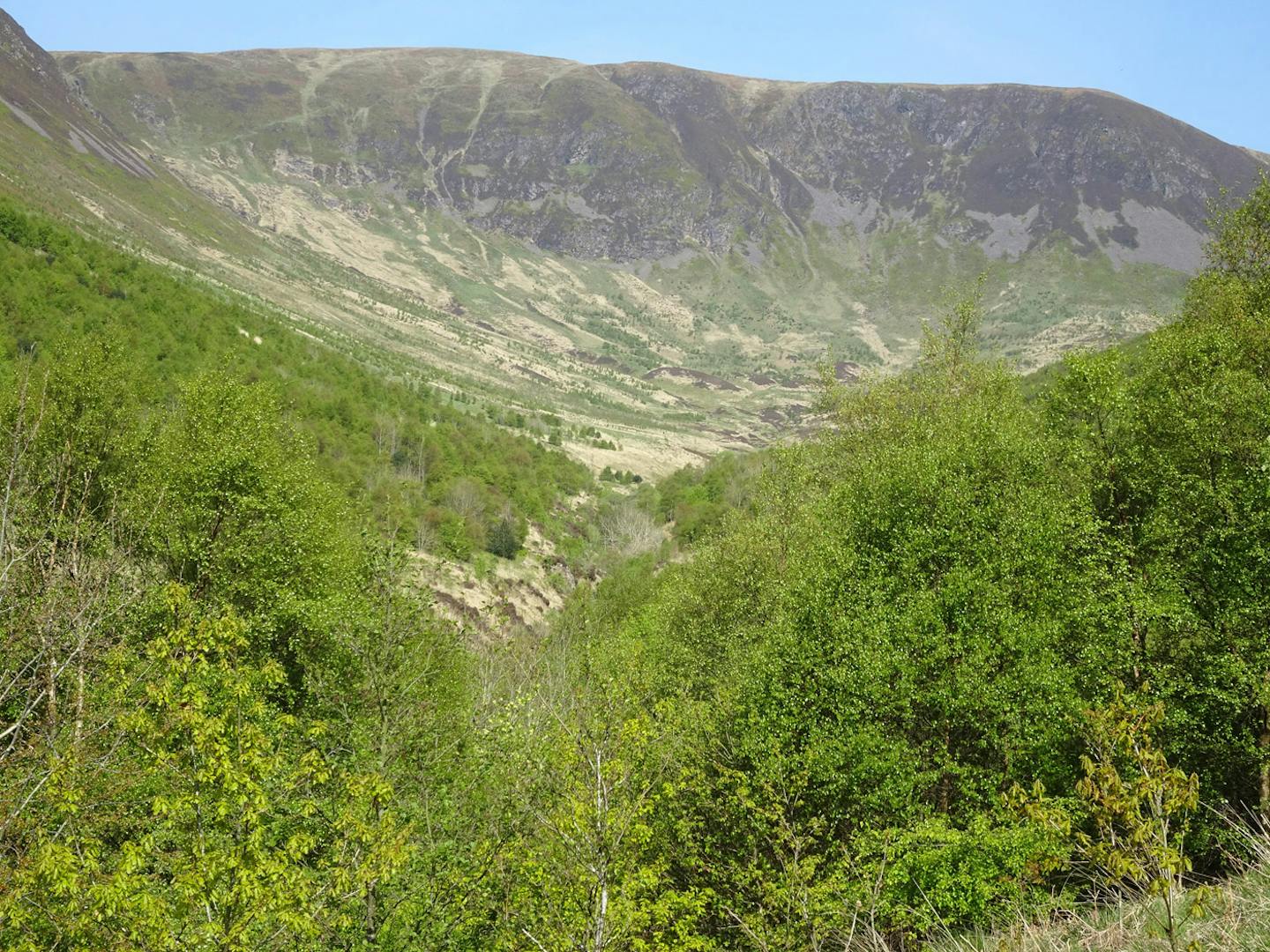Rewilding Britain: letting nature ‘do its thing’ could help solve climate change
- Nature Conservation
- Ecosystem Restoration
- Species Rewilding
- Anglo-Celtic Isles
- Western Eurasia Realm
Three decades ago, Phillip Ashmole would look out of the window of his home in southern Scotland and see a barren valley with few trees sparsely dotted in the landscape. The land here in the Scottish Borders, an area where Scotland and England meet, had been heavily degraded by sheep and goat grazing over centuries.
But now, when Phillip and his wife look out from their home, they see an abundance of trees, shrubs, and woodland. They hear birdsong once again.
Since the 1990s, a community in the Borders has been planting hundreds of thousands of trees in the valleys as part of the Carrifran Wildwood project, restoring 1,500 acres of woodland that had been an almost desert-like landscape.
Rewilding is the restoration of ecosystems, biodiversity, and natural processes. The idea is to let nature take care of itself, get a chance at restoring itself, and in doing so, enable it to confront the climate breakdown and loss of wildlife.
“Rewilding is saying, let’s go a bit more balanced and let nature decide what’s best for its area. There’s more uncertainty with it,” says Dr. Christopher Sandom, a lecturer in biology at the University of Sussex.
With this uncertainty comes a greater chance at fighting climate change. Reforestation, for example, plays a huge role in sequestering carbon. Scotland's forests alone remove around 9.5m tonnes of CO2 from the atmosphere each year.
Researchers say the potential benefits of rewilding as a climate solution are far-reaching. Campaign group Rewilding Britain believes restoring 25% of the UK’s land to nature could make a huge contribution to reaching the nation’s target to be carbon neutral by 2050.
Peatlands, for example, store more carbon than the world’s rainforests, but 80% of peat bogs in the UK have been destroyed through human impact.
“We must radically change the way we manage our land, sea and other natural assets if the UK is to meet its legally-binding climate targets and stop the ongoing loss of our biodiversity,” Rewilding Britain said in its report outlining how rewilding can help decarbonise the UK.
Since rewilding a 3,500-acre estate 20 years ago in Sussex, south-east England, Isabella Tree says they have doubled their land’s soil carbon. It’s a “massive revelation” for an area that had been intensively farmed for years.
Charlie Burrell and Isabella Tree inherited the Knepp Castle Estate as a working-intensive dairy and arable farm.
“After 17 years, we realised we had to do something different to the land, to do something to work with the land, rather than battling it all the time,” says Tree, who seems to have lived up to her family name with her love of nature.
They started by restoring a part of the estate in the early 2000s. “We sewed with native low weald grass and wildflower mix, and put in free-roaming fallow deer to graze it.”
She says the result was an amazing revelation.
Now the whole estate is being restored to nature, using grazing animals, like deer, pigs, ponies, and cattle, to rebuild habitats.
“The more grazing animals you have in the landscape, the more complexity you get in terms of flora and resulting insects and birds,” Tree says. "We are now one of the most significant areas for nature in Britain on our estate, having been one of the most depleted. That is a complete turnaround."
Tree explains that the dung, urine, and trampling bodies of free-roaming animals are “hugely important” for soil restoration. “We have doubled our soil carbon since we started rewilding. We have tripled micro rise of fungi, which is hugely important for the transport of nutrients into plants, and is also part of the carbon cycle. It’s massively important for storage of carbon.”
Tree says projects like theirs give people hope. “It shows what can be done in short spaces of time. If you allow nature to come, species can rebound incredibly quickly. We just have to let it happen. It’s just one tool that can work in certain areas.”
Explore Rewilding Projects


